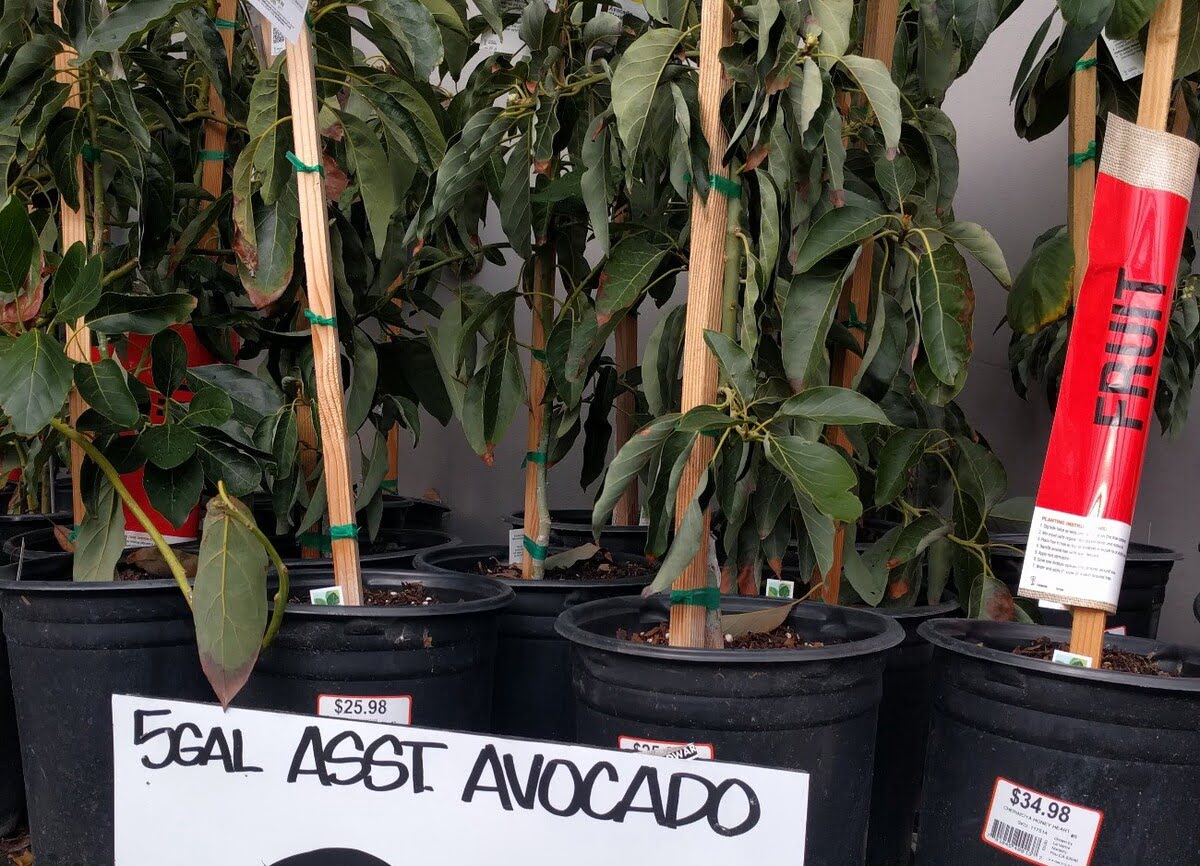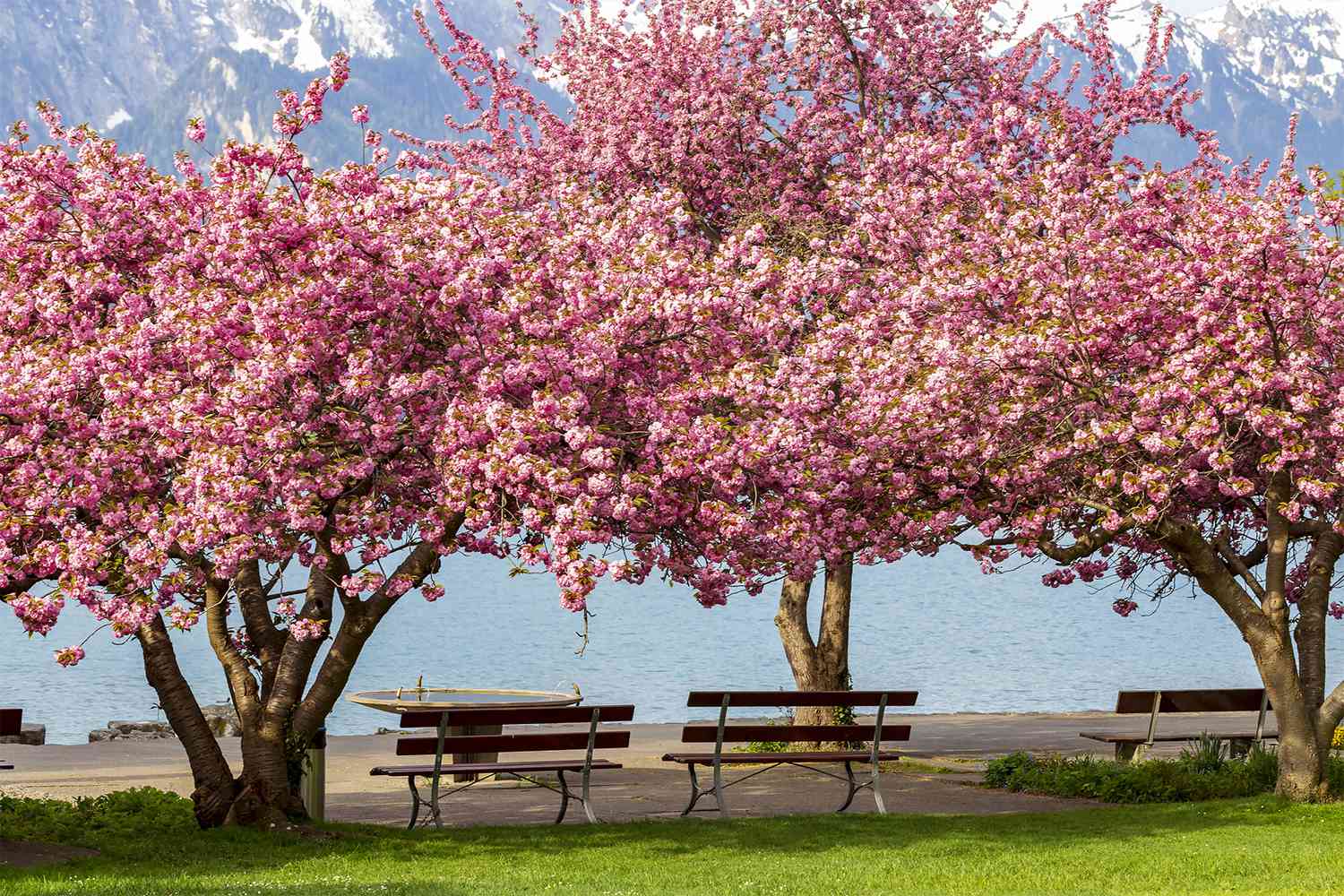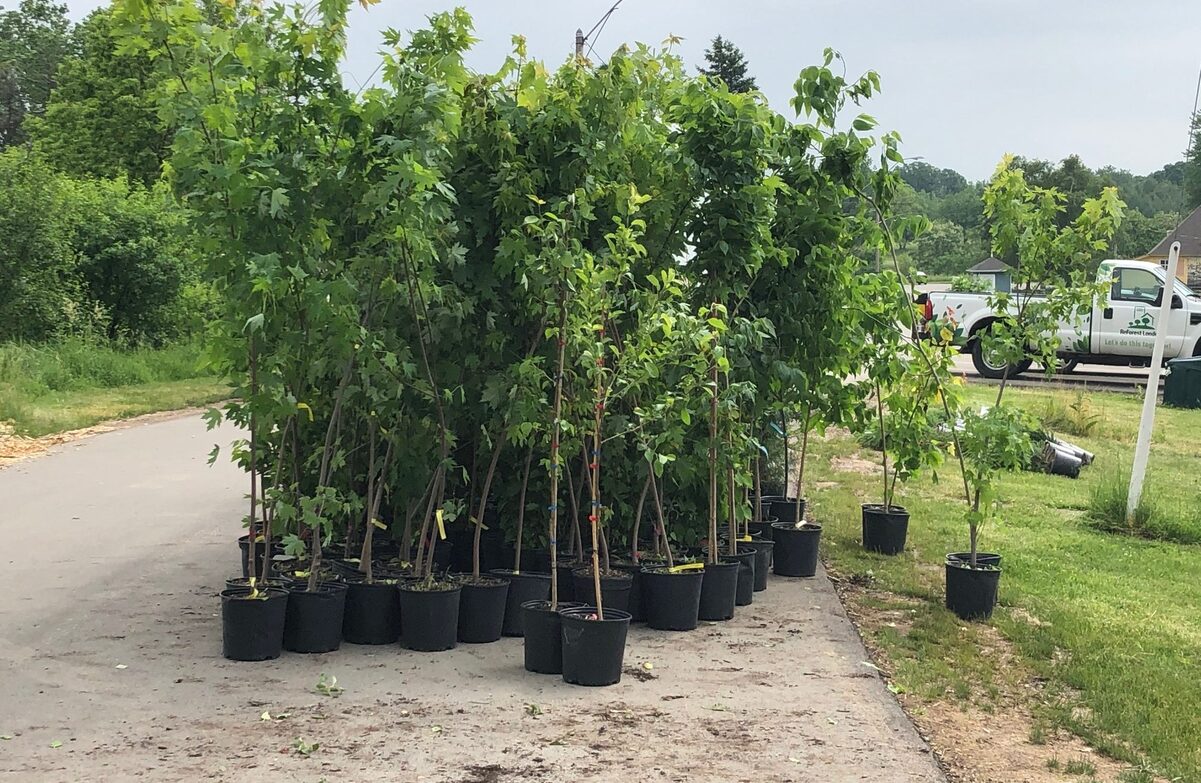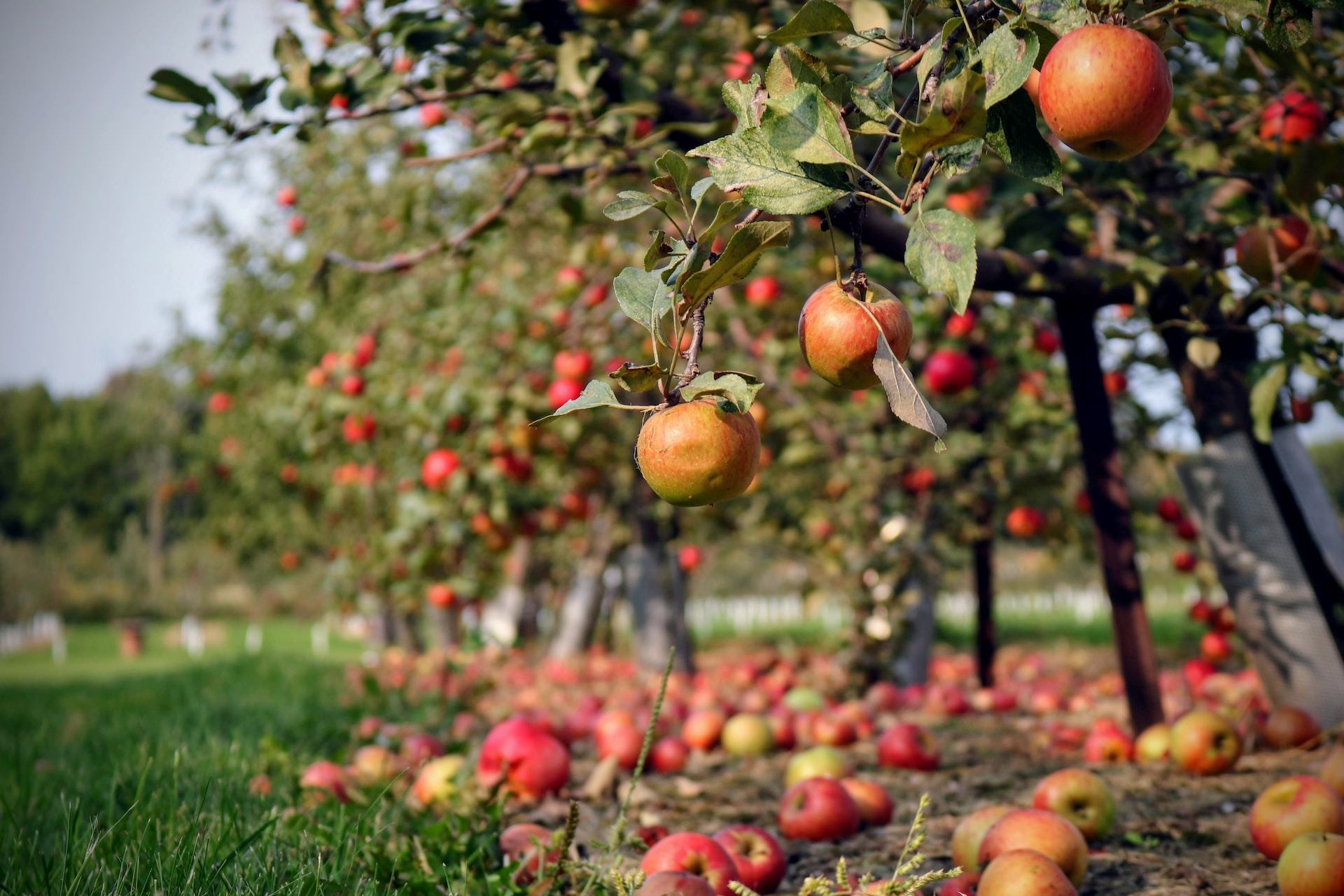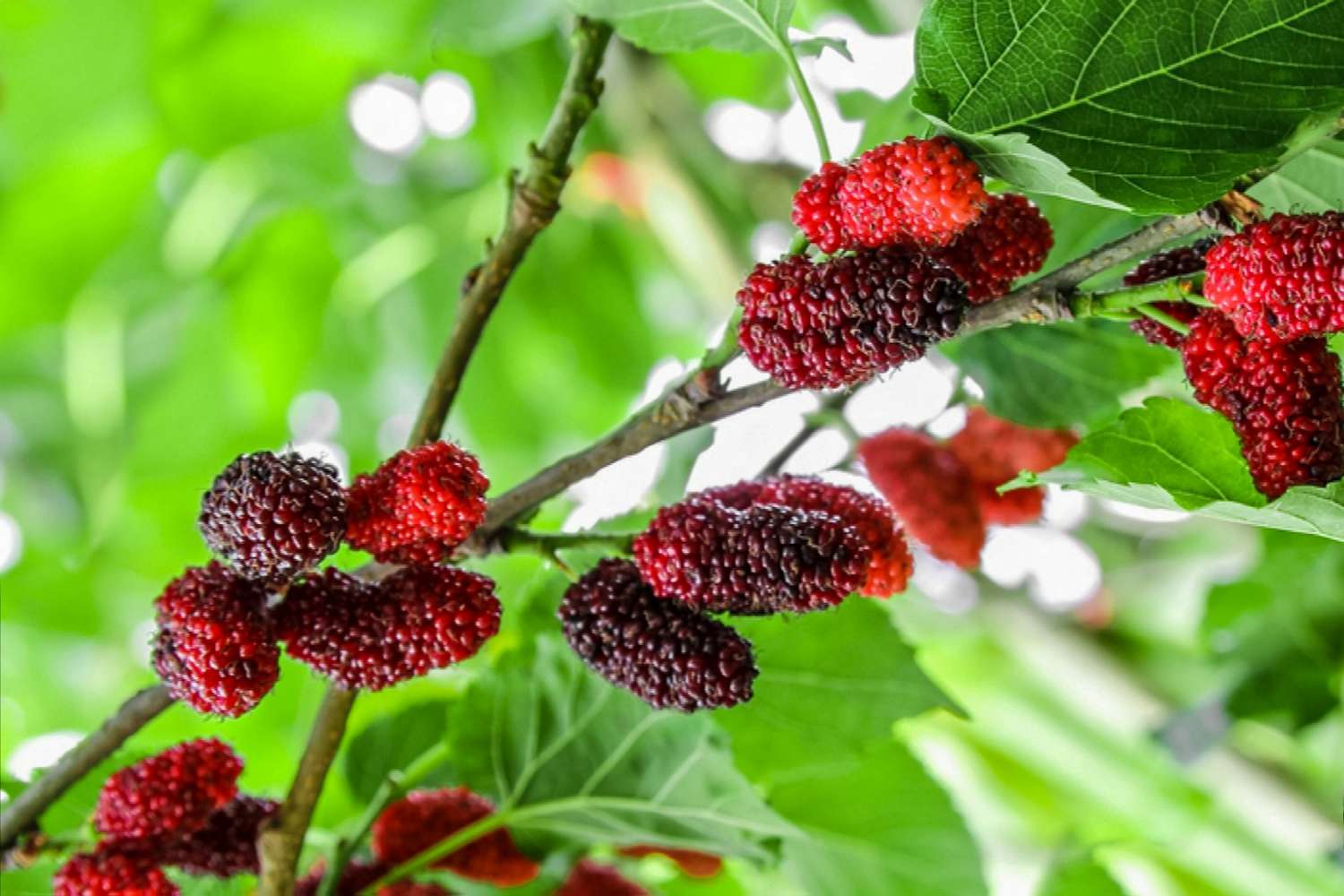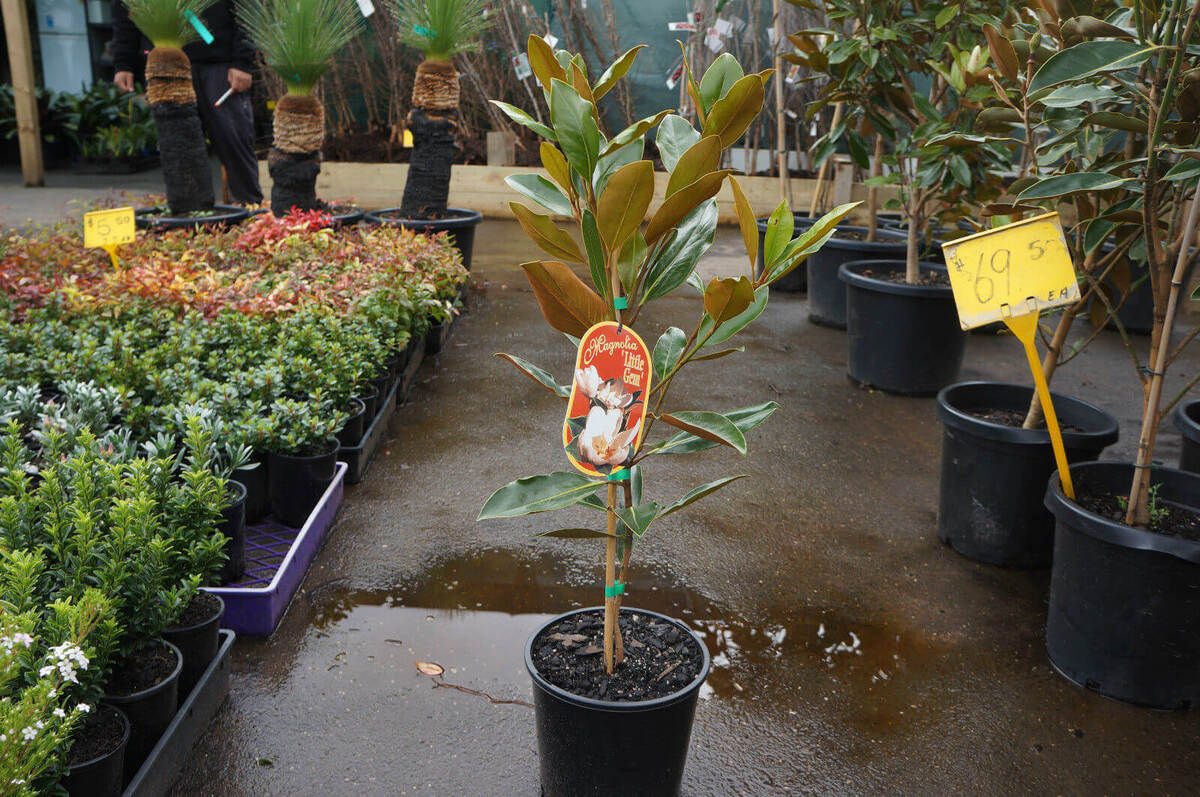Home>Gardening News and Trends>Latest News>Where Are Redwood Trees Located
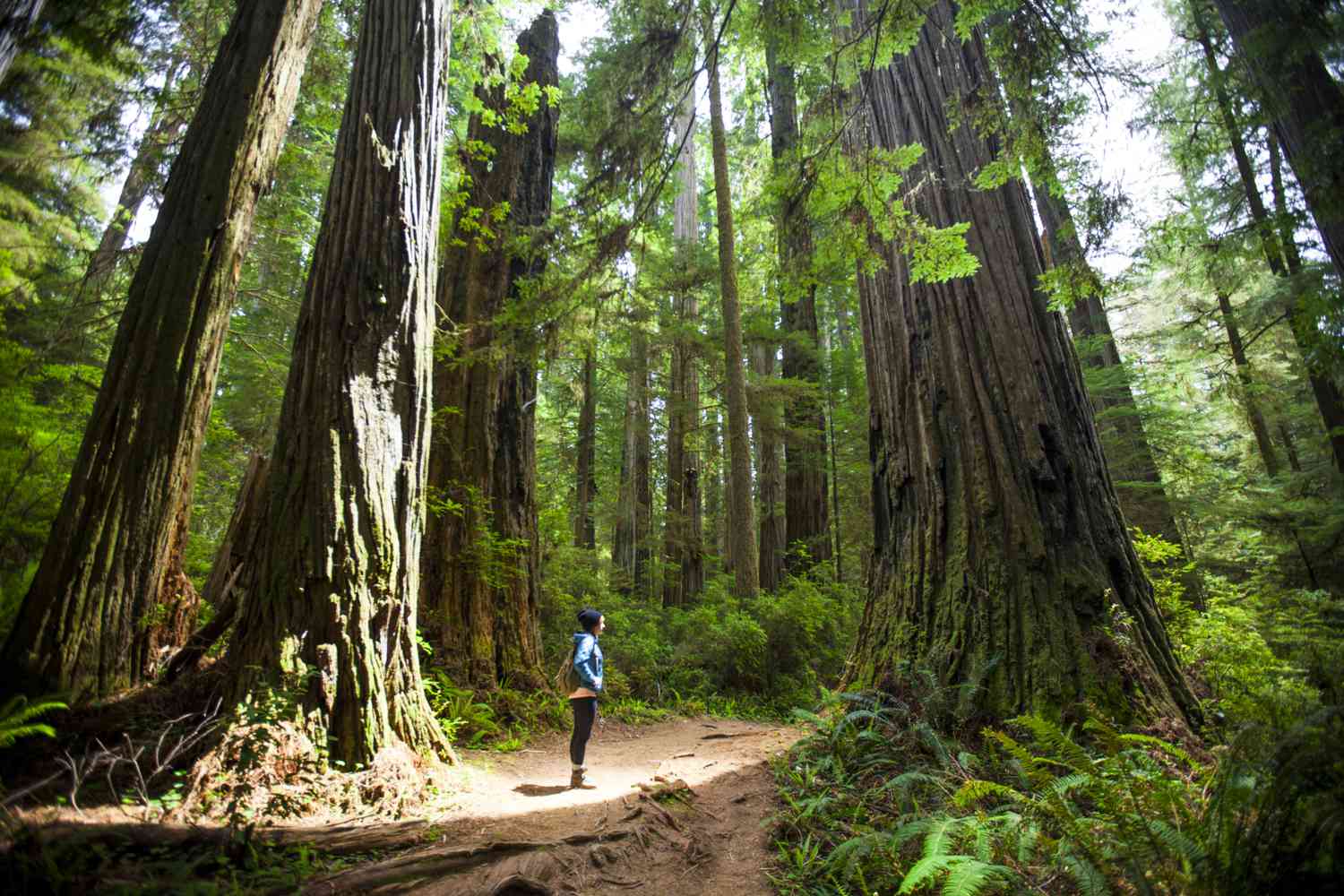

Latest News
Where Are Redwood Trees Located
Modified: January 22, 2024
Discover the latest news on the whereabouts of redwood trees. Learn about their unique locations and where you can find these majestic giants in their natural habitat.
(Many of the links in this article redirect to a specific reviewed product. Your purchase of these products through affiliate links helps to generate commission for Chicagolandgardening.com, at no extra cost. Learn more)
Table of Contents
Introduction
The majestic redwood trees, known for their immense size and longevity, captivate the imagination of nature enthusiasts and visitors alike. These ancient giants are renowned for their impressive height, dense foliage, and fascinating history. In this article, we will explore the geographical distribution of redwood trees, their habitat and climate preferences, their conservation status, and their ecological and cultural significance.
Redwood trees belong to the family Cupressaceae and are native to the west coast of North America. Two main species of redwood trees exist: the coastal redwoods (Sequoia sempervirens) and the giant sequoias (Sequoiadendron giganteum). While often grouped together, these species differ in their geographical distribution, appearance, and habitat preferences.
Coastal redwoods primarily thrive along the coast of California, from southern Oregon to central California. These magnificent trees can grow up to 380 feet in height and have a distinctive reddish-brown bark that can reach a thickness of 12 inches. They prefer the cool, foggy coastal climate, which allows them to thrive in the moist, nutrient-rich soil of the region.
Giant sequoias, on the other hand, are found along the Sierra Nevada mountain range in California. While they can also reach towering heights, with some exceeding 300 feet, they have a larger girth compared to coastal redwoods. The giant sequoia’s bark is relatively thinner and has a reddish-brown color that darkens with age. These trees are adapted to the drier, higher elevation climate of the Sierra Nevada range.
The habitat and climate requirements of redwood trees are crucial factors in understanding their distribution. Coastal redwoods depend on a moderate maritime climate, with mild, wet winters and cool summers. They rely on coastal fog, which helps them absorb moisture and provides a source of water during the dry season. Giant sequoias, on the other hand, have evolved to withstand the harsher conditions of their montane habitat, including snowfall and extreme temperature fluctuations.
In the face of environmental challenges and human activities, the conservation of redwood trees has become a pressing issue. Both coastal redwoods and giant sequoias are classified as endangered species due to logging, habitat fragmentation, and climate change. Efforts are being made to protect and restore their natural habitats, including the establishment of national and state parks, such as Redwood National and State Parks in California.
Beyond their ecological importance, redwood trees hold immense cultural significance. They have been revered by indigenous communities for centuries, serving as gathering places, sources of spiritual inspiration, and symbols of strength and resilience. Today, these majestic trees continue to inspire awe and wonder, drawing visitors from around the world to experience their grandeur firsthand.
Geographical Distribution
The geographical distribution of redwood trees, encompassing both coastal redwoods and giant sequoias, is primarily concentrated in the western region of North America. These unique and iconic trees have specific habitat requirements that determine their distribution and abundance.
Coastal redwoods (Sequoia sempervirens) are predominantly found in the coastal areas of California, stretching from southern Oregon down to central California. This region, often referred to as the “Redwood Empire,” is known for its dense forests and towering redwood groves. The coastal climate along this stretch provides the ideal conditions for these majestic trees to thrive and reach astonishing heights.
Giant sequoias (Sequoiadendron giganteum), in contrast, have a more restricted distribution range. They are native to the western slopes of the Sierra Nevada mountain range in California. These massive trees are found at higher elevations, typically between 5,000 and 7,000 feet, where they are adapted to withstand the harsher climatic conditions of the montane habitat.
Within the distribution range of redwood trees, several notable locations stand out. In California, the Redwood National and State Parks preserve thousands of acres of old-growth redwood forests, providing a haven for these ancient giants and offering visitors an opportunity to witness their grandeur. Other renowned areas include Muir Woods National Monument, Humboldt Redwoods State Park, and Jedediah Smith Redwoods State Park.
While the majority of redwood trees can be found in California, small pockets of coastal redwoods can also be found in southern Oregon. While not as abundant or widespread as in California, these trees exist in localized areas that provide suitable growing conditions.
It is important to note that within their distribution range, redwood trees may be influenced by various environmental factors, such as elevation, proximity to the coast, and topography. These factors can affect the growth and health of the trees, leading to variations in their size and appearance.
The geographical distribution of redwood trees highlights the unique natural heritage of the West Coast of North America. These magnificent trees, with their awe-inspiring beauty and incredible size, have become iconic symbols of the region’s biodiversity and natural splendor.
Subspecies and Varieties
Redwood trees are known for their remarkable size and longevity, but there are also interesting variations within the species that contribute to their diversity. While the two main species of redwood trees are the coastal redwoods (Sequoia sempervirens) and the giant sequoias (Sequoiadendron giganteum), there are notable subspecies and varieties within these broader categories.
Coastal redwoods, as the name suggests, primarily encompass one subspecies: Sequoia sempervirens sempervirens. This subspecies is typically found along the coast of northern California, with the highest concentrations occurring in the Redwood National and State Parks. These trees can reach staggering heights, with some individuals surpassing 350 feet, making them the tallest trees on Earth. They have a characteristic conical shape and are adorned with thick, reddish-brown bark that helps protect them from fire and insect damage.
Within the giant sequoia species, there are several recognized subspecies, each with their own distinct characteristics. The most well-known subspecies is Sequoiadendron giganteum giganteum, commonly referred to as the Sierra redwoods. These giant sequoias can grow to immense sizes, boasting some of the largest tree trunks in the world. Their reddish-brown bark is thick and fibrous, providing insulation against the frequent fires that occur in their natural habitat. Sierra redwoods are primarily found in the Sierra Nevada mountains of California, particularly in national parks such as Sequoia National Park and Kings Canyon National Park.
In addition to the specific subspecies, there are variations within the redwood species known as varieties. These varieties are identified based on certain morphological or ecological differences. For example, within the coastal redwood species, there are varieties such as Sequoia sempervirens var. sempervirens and Sequoia sempervirens var. sinensis. The var. sempervirens variety typically grows in the northern part of the species’ range, while var. sinensis is found in the southern part of the range, with notable populations in Big Sur and Southern California.
The subspecies and varieties within the redwood tree species showcase the unique adaptations and characteristics that have evolved over thousands of years. From the towering coastal redwoods of northern California to the immense giant sequoias of the Sierra Nevada, these diverse variations within the redwood species contribute to their ecological and cultural importance.
Coastal Redwoods
The coastal redwoods (Sequoia sempervirens) are truly remarkable trees that can be found along the coast of California, stretching from southern Oregon to central California. These magnificent trees, also known as California redwoods, are famous for their breathtaking height, dense foliage, and unique adaptations.
What sets coastal redwoods apart is their astonishing height, as they are the tallest trees on Earth. They can reach heights of up to 380 feet, towering above the surrounding landscape. This incredible vertical growth is facilitated by the high rainfall and fog that characterizes the coastal region. The moist, nutrient-rich soil, combined with the mild, foggy climate, provides perfect conditions for coastal redwoods to thrive.
Coastal redwoods feature unique adaptations that allow them to grow to such extraordinary heights. Their tall, straight trunks are coated in a reddish-brown bark that can grow up to 12 inches thick. This bark not only provides protection against fire and insect damage but also helps retain moisture during dry periods. Additionally, the foliage of the coastal redwoods is dense and dark green, forming a canopy that blocks out much of the sunlight, creating a shaded understory that supports a diverse ecosystem.
The coastal climate of the redwood region plays a crucial role in the growth and survival of these majestic trees. They rely on the cool, marine influence brought by the Pacific Ocean, which results in mild, wet winters and cool summers. One essential component of this climate is the coastal fog. The fog blankets the redwood forests, providing a vital source of moisture. It condenses on the trees’ leaves and needles, allowing the trees to extract water and nutrients even during the dry summer months.
Coastal redwoods are not only impressive in terms of their size but also their lifespan. These trees can live for over 2,000 years, making them some of the oldest living organisms on the planet. Their longevity is due to their ability to regenerate, with new shoots sprouting from the burls found at the base of the tree. This remarkable regenerative capacity ensures the survival of the redwood lineage for centuries.
Today, the conservation of coastal redwoods is of utmost importance due to their status as endangered species. Logging, habitat fragmentation, and climate change pose significant threats to their survival. Various conservation efforts, including the establishment of protected areas such as the Redwood National and State Parks, aim to safeguard these ancient trees and preserve their unique ecosystems.
The coastal redwoods, with their awe-inspiring heights and rich ecological significance, continue to captivate the hearts and minds of people around the world. They are a symbol of resilience, beauty, and the enduring power of nature.
Giant Sequoias
Giant sequoias (Sequoiadendron giganteum) are a remarkable species of redwood trees that thrive in the Sierra Nevada mountain range of California. Known for their immense size and impressive girth, these ancient giants evoke a sense of awe and wonder.
Unlike their coastal redwood counterparts, giant sequoias are not the tallest trees in the world. However, they make up for their slightly shorter stature with an incredible volume and mass. These majestic trees can reach heights exceeding 300 feet and have trunks that can measure up to 40 feet in diameter. They are considered the most massive living organisms on Earth, with an estimated weight of over 2.7 million pounds.
The bark of giant sequoias is unique, exhibiting a reddish-brown color that darkens with age. The bark is also exceptionally thick, providing excellent protection against fires that are prevalent in the Sierra Nevada region. This adaptation, along with their ability to resprout from the base after fire, allows giant sequoias to survive and thrive in a fire-prone environment.
Giant sequoias prefer the drier, high-elevation montane habitat of the Sierra Nevada. They are typically found at elevations between 5,000 and 7,000 feet. The climate in this region offers a significant contrast to the coastal redwoods’ cool and foggy habitat. Giant sequoias experience hot, dry summers and cold, snowy winters, with snowpack often serving as an important source of moisture.
One of the remarkable features of giant sequoias is their longevity. These trees have an impressive lifespan, often exceeding 3,000 years. Some ancient specimens have been dated back to the time of the Roman Empire. This incredible longevity is attributed to the tree’s ability to withstand adverse conditions, including droughts and wildfires.
The conservation of giant sequoias is essential, as they are also considered an endangered species. The impacts of logging, habitat destruction, and climate change pose significant threats to their survival. Several protected areas, including Sequoia National Park and Kings Canyon National Park, have been established to safeguard these impressive trees and preserve their vital ecosystems.
Giant sequoias hold immense ecological significance, providing habitats for various plant and animal species. Their massive trunks and fallen logs create microhabitats for mosses, ferns, and small mammals. Additionally, the forest of giant sequoias helps regulate water flow, reduces soil erosion, and sequesters a significant amount of carbon dioxide, mitigating the impacts of climate change.
Witnessing the grandeur of giant sequoias is a humbling experience. These towering sentinels of the Sierra Nevada embody strength and resilience, reminding us of the enduring beauty and power of nature.
Habitat and Climate
The habitat and climate preferences of redwood trees play a crucial role in shaping their distribution and growth. Understanding these factors is key to appreciating the unique environments in which coastal redwoods and giant sequoias thrive.
Coastal redwoods (Sequoia sempervirens) are predominantly found along the foggy coastal areas of California, extending from southern Oregon to central California. These majestic trees require a cool and humid climate, which is characteristic of the coastal regions. They flourish in areas where the cool marine influence from the nearby Pacific Ocean creates a maritime climate. The mild, wet winters and cool summers allow coastal redwoods to grow to awe-inspiring heights.
One of the defining features of the coastal redwood habitat is the presence of coastal fog. The fog provides valuable moisture, especially during the dry summer season when rainfall is scarce. The trees have adapted to capture and utilize this moisture through their leaves and needles, ensuring their survival during periods of drought. The fog also helps to moderate the temperature and reduce water loss through transpiration, creating a favorable microclimate for the trees and promoting their growth.
Giant sequoias (Sequoiadendron giganteum), on the other hand, have a preference for a drier montane climate. They are primarily found in the Sierra Nevada mountain range in California, typically at elevations between 5,000 and 7,000 feet. The montane habitat experiences greater variations in temperature, with hot, dry summers and cold, snowy winters. The snowpack that accumulates during the winter acts as an essential water source for these trees.
While giant sequoias can withstand dry conditions, they have evolved to adapt to the snowmelt and rainfall that occurs during the spring and early summer. This water is stored in the soil and used during the long, dry summers. The montane habitat also experiences regular wildfires, and the thick, fire-resistant bark of the giant sequoia serves as protection against these natural disturbances.
Both coastal redwoods and giant sequoias are dependent on specific soil conditions for optimal growth. Coastal redwoods prefer well-drained soils that are rich in nutrients. The moist, sandy loam soil found in the coastal regions provides ideal conditions for their root systems. Giant sequoias, on the other hand, can tolerate a wider range of soil types, including shallow and rocky soil often found in the Sierra Nevada mountains.
The habitat and climate preferences of redwood trees have shaped their distribution and contributed to their unique characteristics. Understanding these factors helps us appreciate the environmental conditions required for their survival and guides conservation efforts to ensure the continued existence of these awe-inspiring trees.
Conservation Status
The conservation status of redwood trees, both coastal redwoods and giant sequoias, is a matter of great concern due to various threats they face in their natural habitats. These iconic species are classified as endangered, highlighting the need for dedicated efforts to protect and preserve them for future generations.
Coastal redwoods (Sequoia sempervirens) have faced significant challenges due to historical logging practices that targeted these magnificent trees for their valuable timber. The logging industry severely impacted the extent and health of old-growth redwood forests. However, in recent decades, conservation efforts and public awareness have led to the establishment of protected areas and the adoption of sustainable forestry practices.
Today, the remaining old-growth redwood forests are primarily found in protected areas such as Redwood National and State Parks. These parks encompass thousands of acres of preserved land, ensuring the conservation of these ancient trees and the diverse ecosystems they support. However, despite these protected areas, the fragmented nature of the remaining forests poses ongoing challenges for the long-term viability of coastal redwoods.
Giant sequoias (Sequoiadendron giganteum) also face significant conservation issues. While they are not logged to the same extent as their coastal counterparts, giant sequoias are threatened by habitat loss due to human activities, including urban development and infrastructure projects. The encroachment of human settlements into their habitat fragments the forests and disrupts the natural ecosystem processes required for their survival.
Climate change is an additional major concern for the conservation of redwood trees. Rising temperatures, altered precipitation patterns, and increased risk of wildfires are all potential impacts of climate change that can affect the health and distribution of these trees. The longer, more severe droughts that accompany climate change can stress redwood trees, making them more susceptible to diseases and insect infestations.
The conservation efforts for redwood trees encompass a range of strategies, including habitat restoration, establishment of protected areas, and public education. Organizations and agencies work towards acquiring lands, promoting sustainable forestry practices, and collaborating with local communities to ensure the long-term survival of these remarkable trees.
Through these concerted conservation efforts, there is hope that the majestic redwood trees can continue to flourish, providing vital habitats for a diverse array of plant and animal species. Preserving these ancient giants not only ensures the survival of a unique and awe-inspiring natural heritage but also holds promise for mitigating climate change effects and inspiring future generations to appreciate and protect our natural world.
Threats and Challenges
Redwood trees, both coastal redwoods and giant sequoias, face numerous threats and challenges that endanger their survival and the ecosystems they support. Understanding these threats is crucial for implementing effective conservation strategies to protect these magnificent trees.
One of the primary threats to redwood trees is habitat loss and fragmentation. Human activities such as logging, urban development, and agriculture have resulted in the loss of vast areas of redwood forests. The remaining forests are often fragmented, which hinders the movement of wildlife and disrupts natural ecosystem processes. Fragmentation also reduces the gene flow among populations, which can lead to decreased genetic diversity and increased vulnerability to disease and climate change.
Climate change poses a significant challenge for redwood trees. Rising temperatures, changing precipitation patterns, and increased frequency and intensity of wildfires all impact their habitat. Drought conditions, in particular, can stress redwood trees and make them more susceptible to diseases and insect infestations. Changes in precipitation patterns can also disrupt the availability of water, leading to water stress for these water-dependent species.
Another significant threat to redwood trees is the impact of introduced species. Invasive plants, such as English ivy and Himalayan blackberry, can outcompete native plants, alter the forest understory, and disrupt ecosystem dynamics. Invasive insects, such as the sequoia pitch moth, can also damage redwood trees by feeding on their foliage and causing defoliation.
Human activities, including recreation and tourism, can also pose challenges for redwood trees. Trampling of understory vegetation, soil compaction, and disturbance of wildlife habitats can occur in heavily visited areas. Careful management and visitor education are necessary to minimize these impacts and ensure sustainable enjoyment of redwood forests.
Efforts to mitigate these threats and challenges are ongoing. Conservation organizations, governmental agencies, and local communities are working together to protect and restore redwood forests. This includes acquiring and managing lands for conservation, implementing sustainable forestry practices, and conducting research to better understand the ecology of redwood trees and the impacts of climate change.
Public education and awareness play a vital role in addressing these threats. By promoting the importance of redwood trees and their ecosystems, individuals can become advocates for their conservation and support efforts to protect these magnificent trees.
While challenges persist, there is hope for the preservation and continued existence of redwood trees. With collective efforts and continued dedication to their conservation, these remarkable giants can thrive for future generations to appreciate and admire.
Ecological Importance
Redwood trees, both coastal redwoods and giant sequoias, play a vital role in the ecosystems they inhabit, making them ecologically significant species. These majestic trees have a profound impact on the biodiversity, carbon storage, water regulation, and overall health of their surrounding environments.
One of the ecological benefits of redwood trees is their ability to create and support diverse ecosystems. The towering height and dense foliage of these trees create a unique microclimate beneath their canopy. This shaded understory provides a suitable habitat for a wide range of plant species, including ferns, mosses, and lichens. The rich diversity of flora supports a variety of insect species, which in turn attract birds and other small animals.
Redwood forests are known for their remarkable biodiversity. These forests provide critical habitats for numerous wildlife species, including several endangered and threatened ones. Northern spotted owls, marbled murrelets, and coho salmon are just a few examples of iconic species that rely on redwood forests for their survival. The diverse microhabitats within the redwood forest, such as tree hollows, fallen logs, and forest floor, provide nesting sites, den sites, and foraging areas for a multitude of plant and animal species.
Carbon sequestration is another crucial ecological service provided by redwood trees. As some of the largest and oldest living organisms on Earth, redwood trees have the capacity to store vast amounts of carbon dioxide. Through the process of photosynthesis, they absorb carbon dioxide from the atmosphere, convert it into organic carbon, and store it in their trunks, branches, and roots. This helps mitigate the impacts of climate change by reducing greenhouse gas concentrations in the atmosphere.
Moreover, redwood forests play a vital role in water regulation and the maintenance of hydrological cycles. The dense vegetation of these forests captures, filters, and stores rainwater, aiding in groundwater recharge and influencing streamflow patterns. Redwood trees have the ability to draw moisture from the fog and release it into the surrounding environment, sustaining the ecosystem during dry periods. Their roots also help stabilize the soil, preventing erosion and sedimentation in water bodies.
Redwood trees have co-evolved with fire, and the cycles of fire play an integral role in their ecology. Fire helps to release seeds from sequoia pinecones and promotes the regeneration of redwood forests by clearing out competing vegetation and creating open areas for younger trees to establish themselves. The thick, fire-resistant bark of redwood trees protects them during wildfires and allows them to recover and continue their lifecycle afterward.
The ecological importance of redwood trees extends far beyond their individual presence. These magnificent trees shape entire ecosystems, support a myriad of plant and animal life, and contribute to the overall health and functioning of the environment. Preserving and protecting these ancient giants is not only a matter of conserving their beauty, but also of safeguarding the ecological services they provide for current and future generations.
Cultural Significance
Redwood trees, both coastal redwoods and giant sequoias, hold immense cultural significance for various communities and have deep-rooted connections to human history and traditions. These iconic trees have inspired awe and reverence, serving as symbols of strength, resilience, and spiritual significance.
For indigenous communities, redwood trees have been an integral part of their cultural heritage for centuries. They are often considered sacred and hold deep spiritual importance. Redwood groves have served as gathering places for ceremonies, gatherings, and storytelling, providing a connection to ancestors and the natural world. The towering presence and longevity of redwood trees symbolize the enduring strength and wisdom of indigenous cultures, fostering a sense of identity and belonging.
Redwood trees have also played a significant role in the history of human exploration and settlement. The ancient forests of the coastal redwoods provided valuable resources for Native American tribes, who used the wood for building shelters, crafting tools, and creating art. The cultural and economic value of redwood timber led to increased European settlement in the region, which unfortunately resulted in the widespread loss of old-growth forests through logging.
Today, redwood forests hold a special place in the hearts of people around the world. Their immense size and beauty capture the imagination and inspire a sense of wonder. Redwood National and State Parks in California attract visitors from far and wide who seek to experience the tranquility and grandeur of these ancient forests. Walking among the towering redwood trees evokes a sense of awe and a deep appreciation for the natural world.
Redwood trees have also become iconic symbols of environmental conservation and the need to protect our planet’s natural resources. Their majestic stature and longevity serve as a powerful reminder of the importance of preserving biodiverse ecosystems for future generations. Redwood forests have become powerful symbols of the environmental movement, inspiring individuals and organizations to advocate for their conservation and work towards sustainable practices.
Redwood trees have also made their mark in popular culture, appearing in literature, art, and film. Their towering presence and mystical allure have been depicted in various forms of media, capturing the imagination of audiences worldwide. They have become recognized symbols of natural beauty, strength, and resilience.
The cultural significance of redwood trees exists not only within the communities that have been connected to them for generations but also in the broader human experience. These ancient giants inspire a deep sense of wonder and appreciation for the natural world, reminding us of our interdependence with the environment and our responsibility to protect and preserve it.
Conclusion
The redwood trees, encompassing both coastal redwoods and giant sequoias, are truly extraordinary species that captivate our imaginations and inspire a profound sense of awe. These majestic trees, with their immense size, longevity, and unique adaptations, hold immense ecological and cultural significance.
The geographical distribution of redwood trees spans the western region of North America, with coastal redwoods primarily found along the coast of California and giant sequoias thriving in the Sierra Nevada mountain range. The habitat and climate preferences of these trees are crucial factors in understanding their distribution and growth. Coastal redwoods depend on the cool, foggy coastal climate, while giant sequoias have adapted to the drier montane habitat.
The conservation of redwood trees is of utmost importance, as they face numerous threats and challenges. Logging, habitat loss, climate change, and invasive species all pose significant risks to their survival. Efforts are being made to protect and restore their natural habitats, establish protected areas, and educate the public about the importance of redwood conservation.
Redwood trees play a vital role in the ecosystems they inhabit. They support a rich biodiversity, store vast amounts of carbon dioxide, regulate water cycles, and shape entire ecosystems. Additionally, redwood trees hold deep cultural significance, serving as spiritual symbols for indigenous communities and inspiring a sense of wonder and connection to the natural world.
Preserving these ancient giants is not only a matter of conserving their beauty and ecological value but also of recognizing their significance in our collective cultural, historical, and environmental heritage. By valuing and protecting redwood trees, we can ensure that future generations can continue to marvel at their grandeur and benefit from the ecological services they provide.
